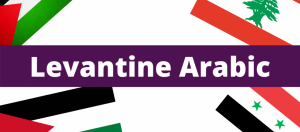Language/South-levantine-arabic/Vocabulary/Fruits
Hi South Levantine Arabic learners! 😊
In this lesson, we will learn about the different fruits in South Levantine Arabic. Fruits are an essential part of our diet and culture, and they have many interesting stories behind them. By learning the fruits in South Levantine Arabic, you will be able to communicate more effectively with native speakers and deepen your understanding of their culture. Let's get started!
Don't hesitate to look into these other pages after completing this lesson: Colors & Feelings and Emotions.
Importance of fruits in South Levantine culture[edit | edit source]
Fruits play a significant role in the South Levantine culture, and they are commonly served during social gatherings and family meals. In Palestine, for example, it is a tradition to offer figs and dates to guests, while in Jordan, watermelon is often served during the hot summer months. Many fruits are also featured in traditional sweet dishes and desserts, such as baklava and knafeh.
South Levantine Arabic Vocabulary - Fruits[edit | edit source]
Here are some of the most common fruits in South Levantine Arabic:
| South Levantine Arabic | Pronunciation | English |
|---|---|---|
| تفاح | tuffaha | apple |
| موز | mawz | banana |
| كمثرى | kumthara | pear |
| مشمش | mishmish | apricot |
| بطيخ | batikh | watermelon |
| برتقال | burtuqal | orange |
| عنب | 3enab | grape |
| رمان | roman | pomegranate |
| خوخ | khawkh | peach |
| ليمون | laymoon | lemon |
You may notice that many of the fruit names sound similar to other languages or have a similar origin, like "orange" which is burtuqal in Arabic, and originated from the Persian word for "orange."
Let's practice using some of these fruits in context:
- Person 1: هل لديك تفاح؟ (hal ladayka tuffaha?) (Do you have an apple?)
- Person 2: نعم، لدي تفاحة أحمر. (na’am, ladi tuffah ahmar.) (Yes, I have a red apple.)
- Person 1: هل تحب الموز؟ (hal tuhibb almawz?) (Do you like bananas?)
- Person 2: نعم، أحب الموز. (na’am, ahibb almawz.) (Yes, I like bananas.)
- Person 1: هل تحب الكمثرى؟ (hal tuhibb alkumthara?) (Do you like pears?)
- Person 2: لا، لا أحب الكمثرى. (la, la ahibb alkumthara.) (No, I don't like pears.)
Interesting facts about fruits[edit | edit source]
- Did you know that the pomegranate is a symbol of fertility and prosperity in many cultures? It is also thought to have healing powers and has been used for medicinal purposes for centuries. - The apple is one of the most historically symbolic fruits. It was featured in the Bible as the forbidden fruit in the story of Adam and Eve. - The banana plant is the largest herbaceous flowering plant. Despite its size, bananas are actually berries. - In many cultures, watermelon is said to have cooling properties that can help with dehydration and heatstroke. - Orange trees are said to have originated in Southeast Asia and were first cultivated in China over 4,000 years ago.
Practice Exercises[edit | edit source]
Now it's time to practice what you've learned! Head over to the South Levantine Arabic questions section in Polyglot Club and ask a native speaker to practice the vocabulary you've learned in this lesson.
You can also improve your South Levantine Arabic vocabulary by checking out other lessons and resources on Polyglot Club.
Sources[edit | edit source]
➡ If you have any questions, please ask them in the comments section below.
➡ Feel free to edit this wiki page if you think it can be improved. 😎
Other Lessons[edit | edit source]
- Clothes
- Express Surprise
- Count to 10
- Colors
- Geography
- Drinks
- Food
- How to say Good Bye?
- Education
- How to Say Hello and Greetings

